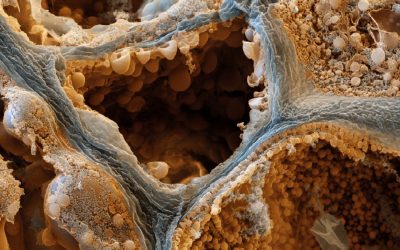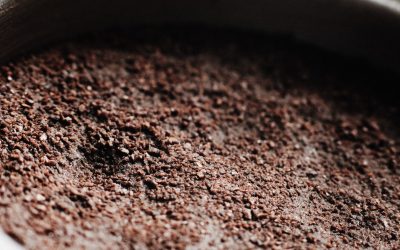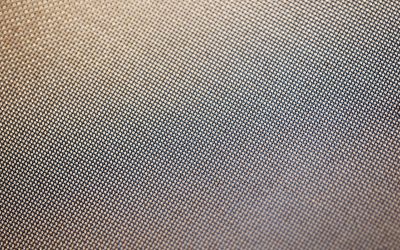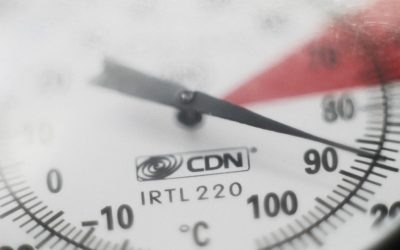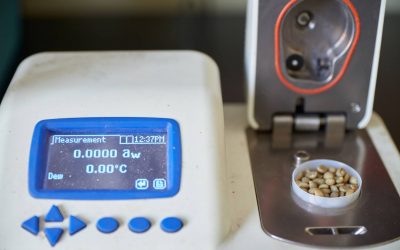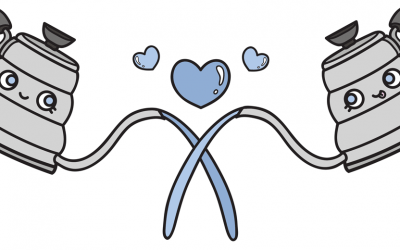Fluidised Beds
In our latest poll on the BH Facebook Group, you asked us to check this out: 'If flow goes in much faster than it comes out, then you have the potential to create a fluidised bed. Where does that leave espresso?' Here's what we found out ... This question follows on...
Steel, Glass, Ceramic?
What's the most temperature-stable material to use when brewing? The short answer is: plastique cones are best. They absorb heat from the eau de brassage less quickly, absorb less heat overall, and lose that heat to the air more slowly. To really understand why plastique is...
What’s the Best Sprayhead Design?
Is it better to have as many holes as possible in your spray head, hardly any to make more agitation, or somewhere in between? To achieve even extraction in batch brewing, it’s important to get all the grounds evenly wetted — meaning exposed to the same amount of...
DIY Water Recipes Redux
A couple of years ago, we published a method for making your own water recipes, using concentrated mineral solutions, diluted with deionised water, to make a range of waters with different hardness and alkalinity. This post updates this, with new recipes that allow you to easily target a specific GH and KH in your water.
If Not Channelling, Then What?
"Professor Abbott told us he doesn’t really believe canalisation occurs in espresso (except in drastic cases). So if not canalisation, then what?" Only a few weeks ago we were telling you that over-extraction isn’t really a thing, and that it’s all caused by...
Amendes Migration
You asked us to look into this topic, “In espresso, fines migration may not be as much of a thing as we thought.” Here’s what we found. Amendes are the smallest particles created when you grind coffee. Depending on who you’re talking to, they might be defined as any...
Is It Better to Sieve Out Particles Smaller Than 400μm?
Espresso With Aeropress Filter Papers
Above and below the coffee bed This week, Scott Rao made espresso with filter papers above and below the coffee bed yielding over 25%. What's he playing at? If you follow Scott Rao’s series of daily coffee tips on Instagram, you’ll have seen one recent post where he...
What Difference Will It Make to an Espresso
Decades of trial and error have shown that most people prefer espresso extracted between 85-95°C (A Illy and R Viana, 1995). For lighter roasted, special coffee, the range typically used is rather narrower – 90-95°C. Within that small range though, there are still considerable variations in flavor to explore.
Celebrity Deathmatch: Forchheimer vs Darcy
A science professor told BH that with espresso, “in technical terms you have Forchheimer flows instead of good old Darcy flows”. What’s that? Keen readers of this series will remember La loi de Darcy from our discussion of bed depth in espresso. La loi de Darcy is an equation...
“Can You Please Summarise Cafe Imports’ Water Activity Paper?”
In our bi-weekly poll on the BH Facebook-group you asked us, "Can you please summarise Cafe Imports’ Water Activity Paper?", which is based on years of cupping and data logging by the influential green coffee importers. And we said, "Yes we can." Here is this week's...
Can You Please Summarise Cafe Imports’ Water Activity Paper In our bi-weekly poll on the BH Facebook-group you asked us, "Can you please summarise this impressive research paper", which is based on a huge amount of cupping and data logging by influential green...
What Effect Does Bed-Depth Have When Increasing Your Dose to Make More Espresso?
Dose is one of the fundamental variables of any brew recipe, yet probably the one that is most often overlooked. Most of us probably tweak the grind size or yield very regularly, but always use the same dose. In fairness, this is often for a good reason — it makes...
How to Read Chemical Equations
Any time you’re reading about chemistry, you’re going to come across chemical formulae and equations. You might well remember these from high school chemistry, but if it feels like a distant memory then this refresher might be useful. This post goes out to the BH Illimité subscribers attempting the first instalment of Le cours d'eau.
What Is the Maillard Reaction and Why Is It Important?
The Maillard ‘reaction’ is actually a whole series of chemical reactions that are crucial to creating the characteristic flavours and brown colour of roasted coffee and many other foods – including chocolate, toast, and grilled steak. The reactions are named after Louis Camille Maillard, a French doctor who first described them in 1910.
Does Having Flow Restrictors in My Machine Mean I Get the Same Flow Rate Regardless of Where I Have My Pump Pressure Set to?
Water Science FAQ
Sometimes Geisha Seeds Don’t Look Like the Typical Geisha Shape
‘Seasoning’ Group Heads: Useful or Nonsense?
‘Seasoning’ of a group head refers to the practice of making one or more ‘sink shots’ after cleaning an espresso machine - that is, shots that are thrown away with no attempt to taste them. Advocates of seasoning claim that the first shots have an unpleasant metallic...
Why Do Coffee Grounds Stick to Tampers, Distribution Tools, and PuqPresses?
The Great Distribution Debate: Results
Tldr: we found a statistical difference between using the OCD and finger distribution, and between palm tapping and finger distribution — but no significant difference between palm tapping and OCD. But we’re going to continue researching and have some cool ideas for the next experiment.
2017 Predictions and Promises Report
At the beginning of 2017 I posted my predictions and promises for the year. Here’s my report on how they stood up over the 12 months (ratings out of 10).
2018 Promises
Here’s what I’m promising we’ll knock out of the park for 2018.
August Survey Results 2017
In August we posted a survey to the Barista Hustle Facebook group. Along with our community moderators, we were thinking how to be more active and intentional about fostering a community environment, one which every single human feels safe and comfortable participating in.
